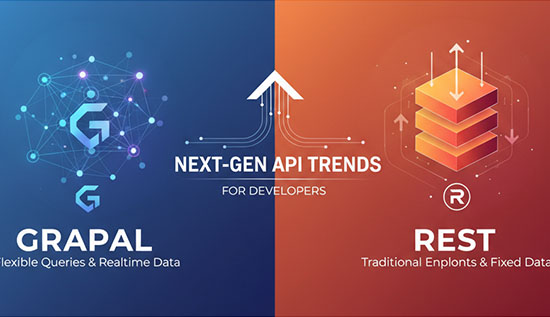Why it is Most Important to Keep Workplace Security on Priority?

A secure workplace boosts productivity and trust. Strengthen security measures to prevent threats and ensure a safe work environment.
In the hectic business environment of today, workplace security is a requirement not merely something to consider. Strong security measures must be put in place since businesses are more vulnerable to dangers like cyberattacks and physical security breaches.
It could be a conventional office or a remote workplace security setup, ensuring protection for employees, data and infrastructure are essential also. The importance of workplace security, key concerns and practical ways to safeguard your business will all be covered in this article. We will also go over new developments in security and how companies can keep up with changing threats.
Knowing About Workplace Security
Workplace security encompasses several measures to protect employees' belongings and personal information. These security measures we aim to reduce potential risks and prevent unwanted entrance by implementing both digital and physical safeguards.
Types of Workplace Protection
- Physical Security: Consists of security guards, surveillance cameras and access control systems.
- Cybersecurity: Protects digital assets through web security and workplace safety protocols.
- Procedural Security: Prioritizes training employees on workplace security awareness and staff education.
- Security for remote work: Protections against unauthorized access and internet threats.
- AI and Automated Security: Security systems with AI capabilities are used to recognize threats and respond accordingly.
Key Benefits of Prioritizing Workplace Security
Securing employee safety, preventing data breaches, boosting productivity and one benefit of focusing on workplace security is maintaining regulatory compliance. Here are a few of the most important advantages:
- Infrastructure and Employee Protection: Security solutions ensure that employees feel safe no matter they are working in an office setting or remotely. A protected workplace reduces the risk of injury or theft by blocking unauthorized entry. Companies that prioritize security provide a more productive work environment where employees can focus without worry.
- Preventing Data Breaches: A significant security threat today is cyberattacks. Valuable corporate data is protected by putting into practice contemporary workplace security solutions like firewalls and encryption. Since data breaches can cause significant financial losses as well as harm to an organization's reputation cybersecurity should be one of its top objectives.
- Enhancing Productivity and Trust: In a secure setting, workers perform better. Companies that prioritize workplace security gain the trust of both clients and employees. A safe workplace ensures that corporate operations continue without interruption due to security breaches or safety threats.
- Ensuring Legal Compliance: Strict security regulations that are found in many different industries must be followed by businesses. Penalties from the law may follow noncompliance. Implementing workplace security measures assists companies in avoiding legal risks and meeting compliance obligations.
Workplace Security Tips for Businesses
Employing appropriate security measures aids companies in safeguarding their personnel and property. Below are some essential workplace security tips that organizations can follow to improve security at the workplace.
1. Implement Access Control Systems
- Use keycards or biometric access for restricted areas.
- Keep track of visitor access while maintaining logs.
- For digital systems, use two-factor authentication.
2. Strengthen Cybersecurity Measures
- Install antivirus software and firewalls.
- Train employees on web security and workplace safety best practices.
- Use VPNs for remote employees to ensure secure communication.
- Implement regular password changes and authentication measures.
3. Conduct Regular Workplace Security Awareness Training
- Employee education regarding cyberthreats and phishing.
- Update security procedures on a regular basis.
- To assess readiness run security exercises and simulations also.
- Workers should be encouraged to report any suspicious activity.
Workplace Security Risks and How to Handle Them
Each firm has distinct security concerns that can have an impact on employee productivity as well as corporate operations. Below are some common security risks in the workplace and how to mitigate them effectively.
1. Unauthorized Access
- Risk: Data breaches or theft may result from unauthorized access to restricted locations.
- Solution: Make use of surveillance cameras security badges and biometric authentication.
2. Insider Threats
- Risk: Employees or contractors misusing access to sensitive information.
- Solution: Enforce stringent security procedures and keep an eye on employee access. Prior to employment run background checks.
3. Cybersecurity Breaches
- Risk: Hackers accessing confidential business data.
- Solution: Invest in cutting-edge workplace security solutions like end-to-end encryption and also multi-factor authentication.
4. Inadequate Security for Remote Work
- Risk: Remote employees accessing business data over unsecured networks.
- Solution: Make use of endpoint security secure VPNs and mandate cybersecurity training for the entire organization.
What Are the Key Security Concerns When Using AI Tools in the Workplace?
Workplaces are changing due to AI-powered solutions but there are new security risks as well. The following is a list of some of the primary challenges that companies face when incorporating AI into their security frameworks.
1. Data Privacy Risks
- Risk: Artificial intelligence systems capture and also store large amounts of data increasing privacy concerns.
- Solution: To limit data security vulnerabilities, use encryption and access controls.
2. Automated Threats
- Risk: AI-driven cyberattacks are becoming more common.
- Solution: Regularly update AI-based security protocols and monitor for anomalies also.
3. Bias and Ethical Concerns
- Risk: AI security tools may inadvertently introduce bias.
- Solution: Audit AI algorithms on a regular basis to guarantee impartial and moral decision-making.
4. Human Over-Reliance on AI
- Risk: Workers who do not have human oversight may rely too heavily on AI-based security.
- Solution: Retain human monitoring throughout all AI-powered security processes.
5. Vulnerability Exploitation
- Risk: Cybercriminals can exploit AI weaknesses to bypass security.
- Solution: Update AI security models often to reduce vulnerabilities.
Case Studies: Successful Implementation of Workplace Security
Several companies have effectively improved workplace security by deploying advanced security measures. The following are some real-world instances of the benefits of a secure workplace.
Case Study 1: Tech Company Enhancing Cybersecurity
A leading IT firm faced frequent cyberattacks. By implementing web security and also workplace safety measures such as encrypted VPNs and AI-based threat detection they successfully reduced data breaches by 70%.
Case Study 2: Retail Store Enhancing Physical Security
A shop chain experienced theft as a result of inadequate physical security measures. After implementing smart cameras and also biometric access systems theft cases decreased by 50%.
Case Study 3: Remote Work Security in a Global Corporation
A multinational company had security concerns for its remote workforce. By adopting remote workplace security measures such as end-to-end encryption secure file-sharing platforms and multi-factor authentication, they successfully minimized security breaches.
Read More: How Self-Discipline Drives Workplace Success
Conclusion
Providing safe working conditions should be a key priority for organizations of all sizes. Companies must take proactive actions to secure their physical locations and protect their digital assets. Investing in workplace security awareness training, monitoring security risks in the workplace addressing common AI security concerns would help firms stay protected.
Prioritizing modern workplace security not only protects assets but also promotes a secure, productive and trustworthy environment for both employees and clients. Organizations that take security seriously are more resilient to cyber threats, workplace hazards, and compliance risks.
Companies may succeed in an increasingly complicated digital landscape by regularly updating workplace security policies training staff and utilizing cutting-edge security solutions. Safeguarding people, data and infrastructure should be the foundation of any successful company not a last resort.
Read More: Future of Extended Reality in the Workplace: Key Trends & Uses
More Articles
 24 Nov 2025
24 Nov 2025
Increase User Engagement with Cross-Platform Strategies
Learn cross-platform engagement strategies to strengthen consistency and boost user interaction across all digital channels.
 20 Nov 2025
20 Nov 2025
GraphQL vs REST: Next-Gen API Trends for Developers
Compare GraphQL vs REST to optimize API performance, scalability and modern application design with best practices for developers.
 20 Nov 2025
20 Nov 2025
Neural Network Programming Beyond Python: Rust & C++
Experience neural network programming beyond Python, powered by Rust and C++ ecosystems built for speed, safety, and large-scale deployment.
 19 Nov 2025
19 Nov 2025
Swarm Robotics in Agriculture & Logistics: Smart Automation
Swarm Robotics in Agriculture & Logistics enhances automation, efficiency, and smart coordination across modern farming and logistics operations.